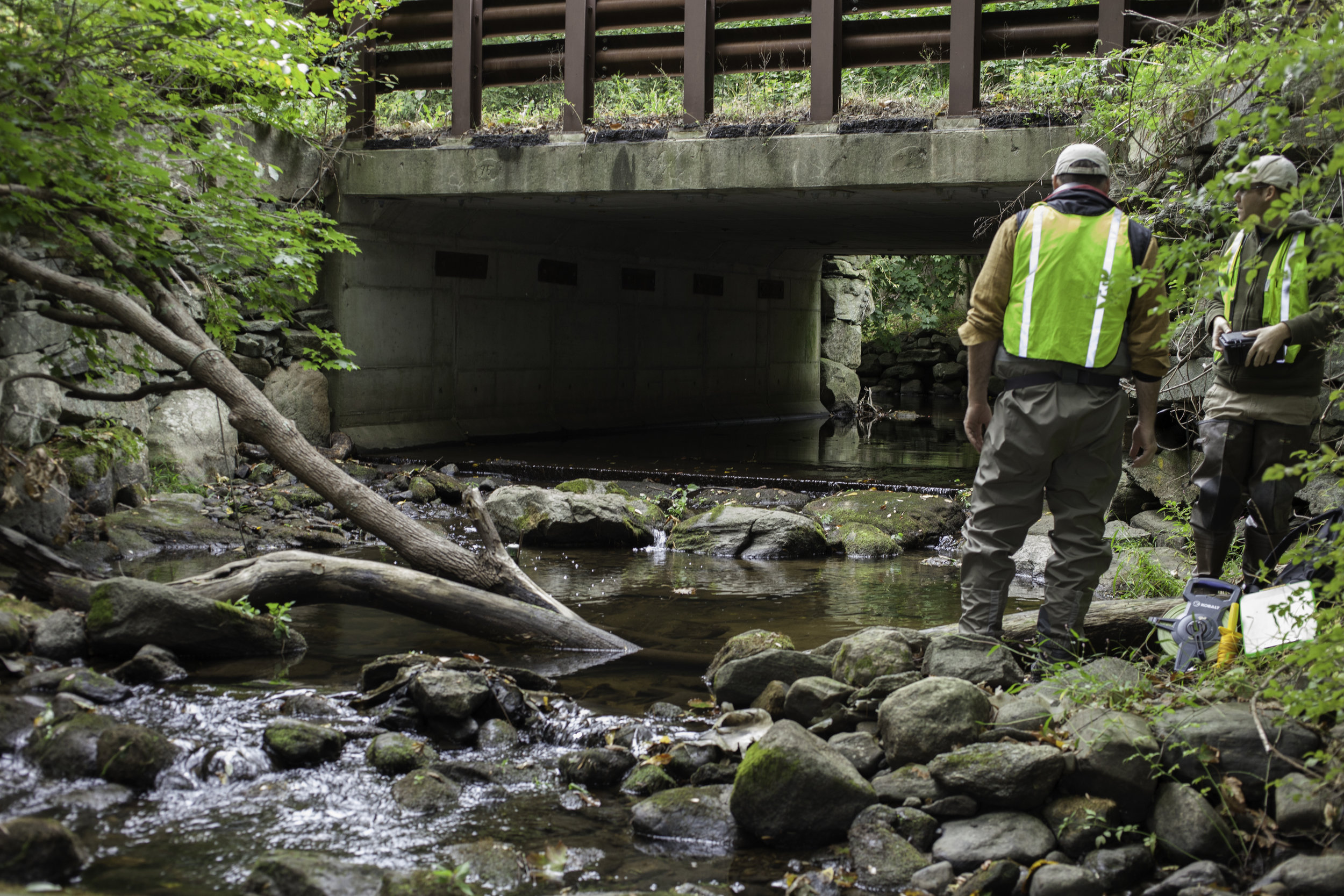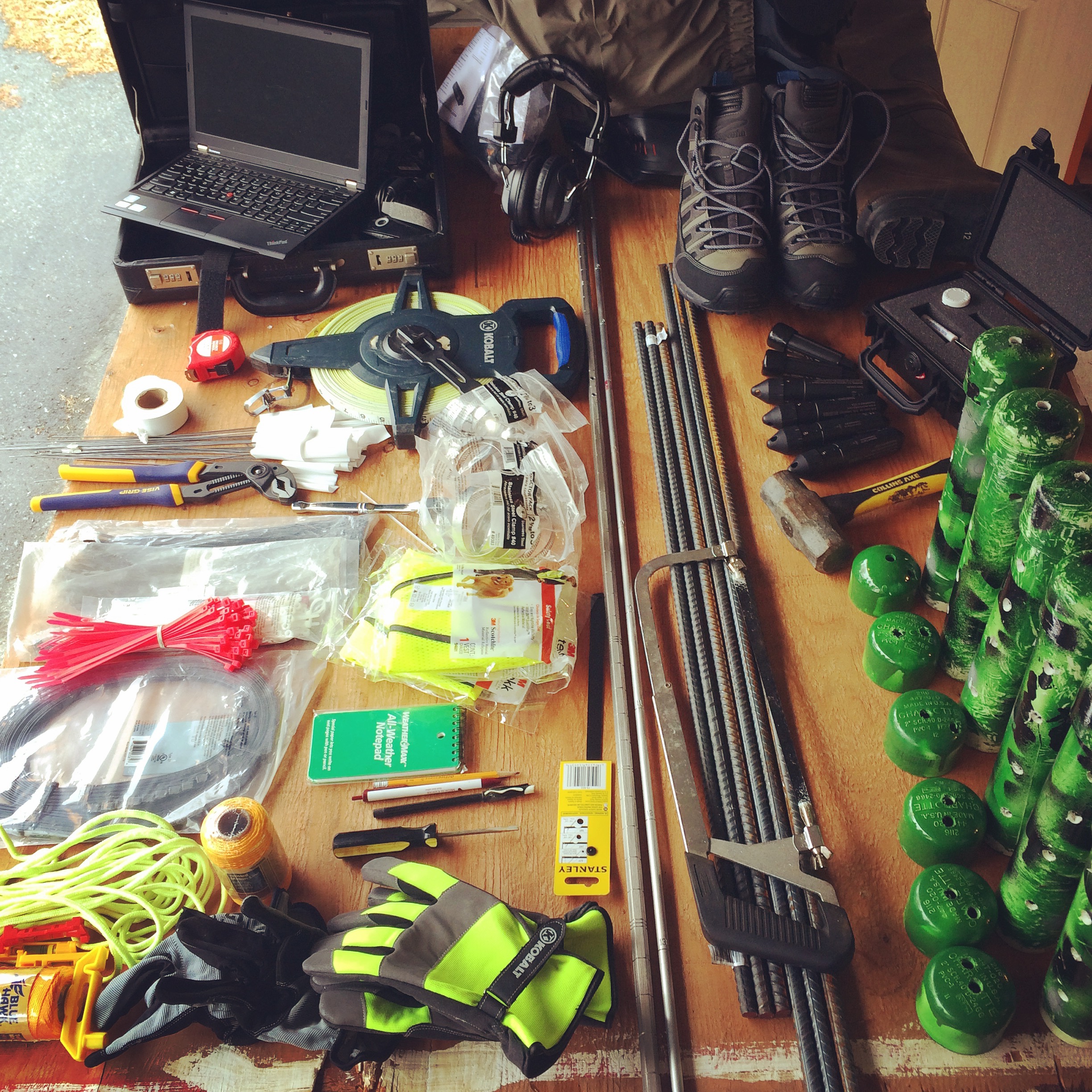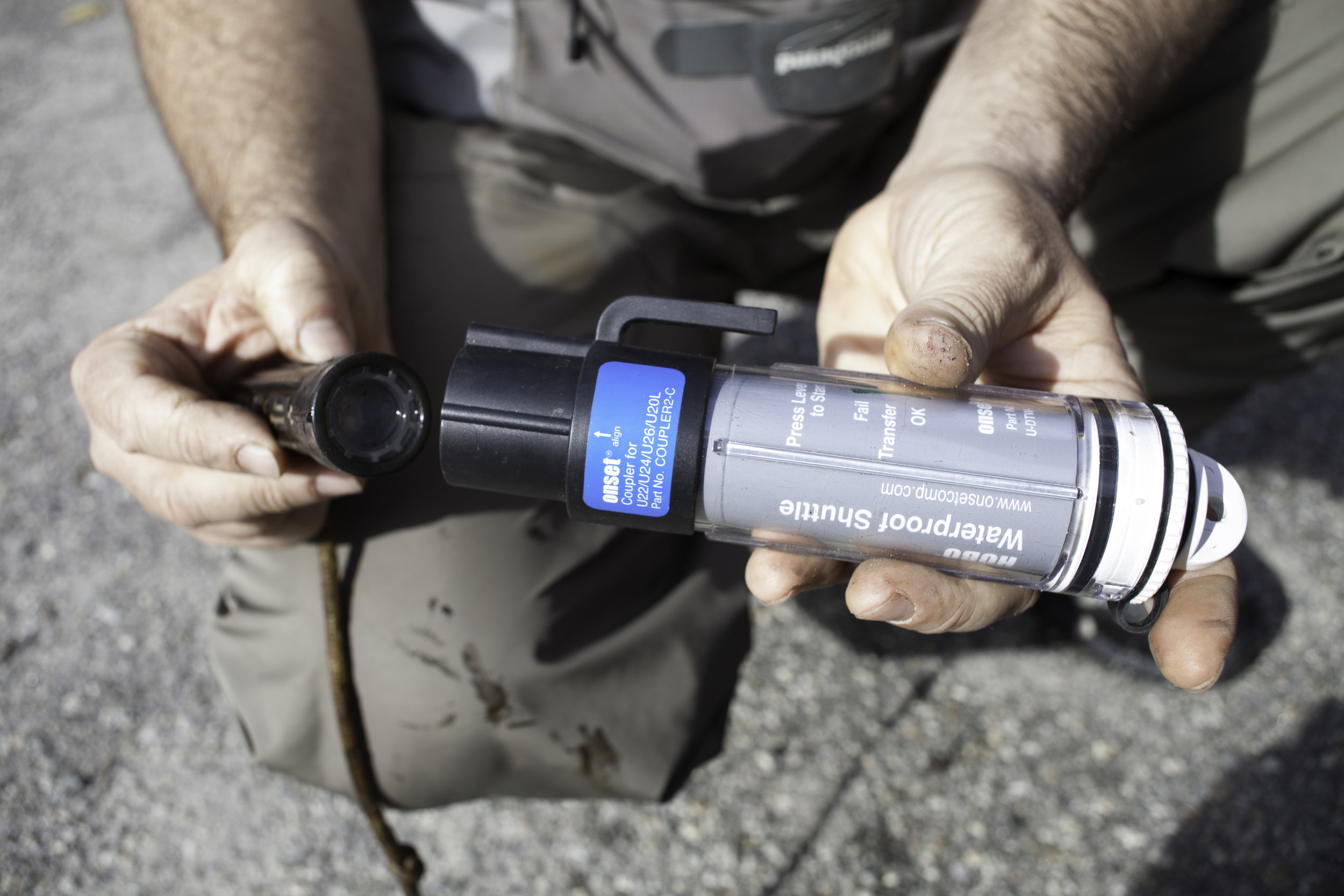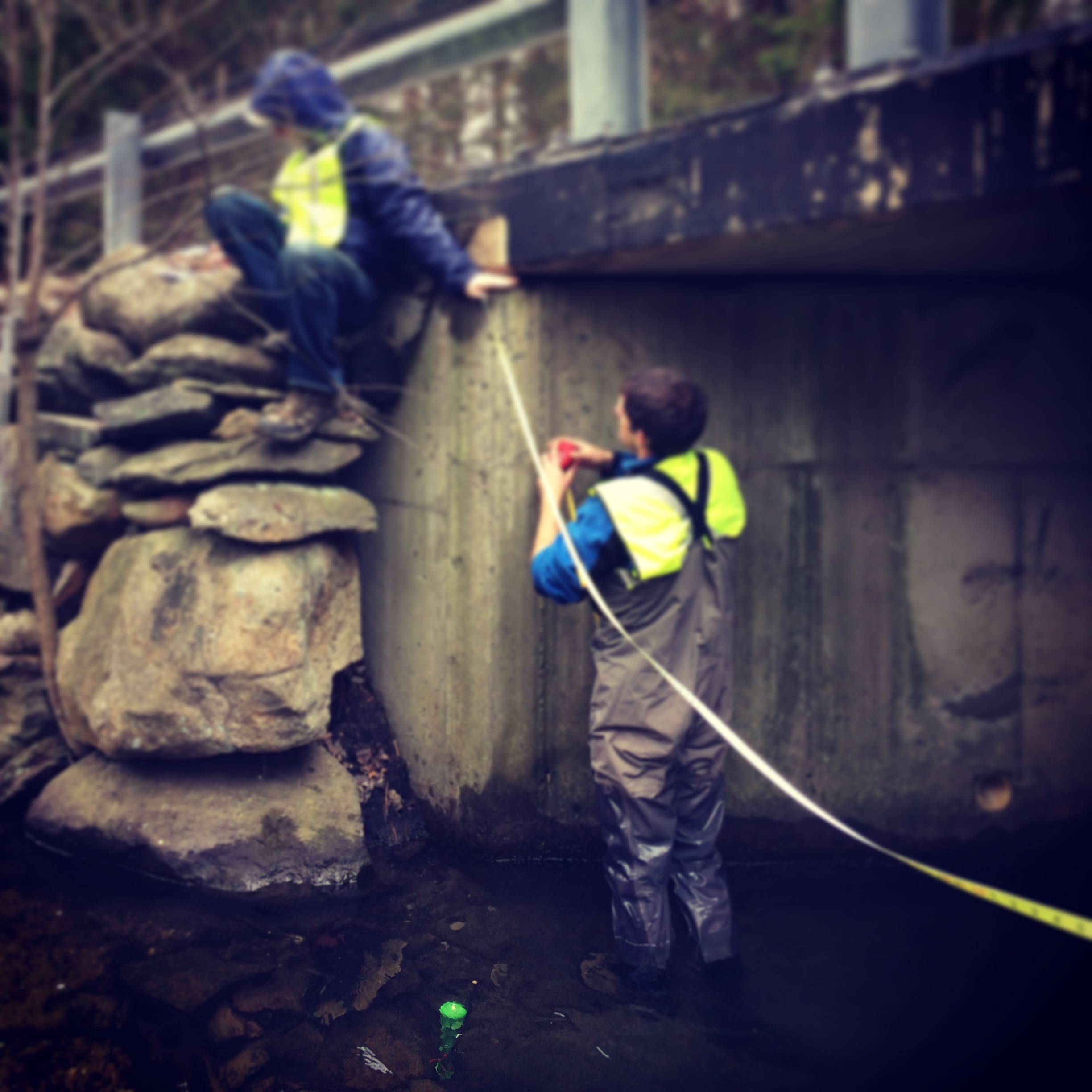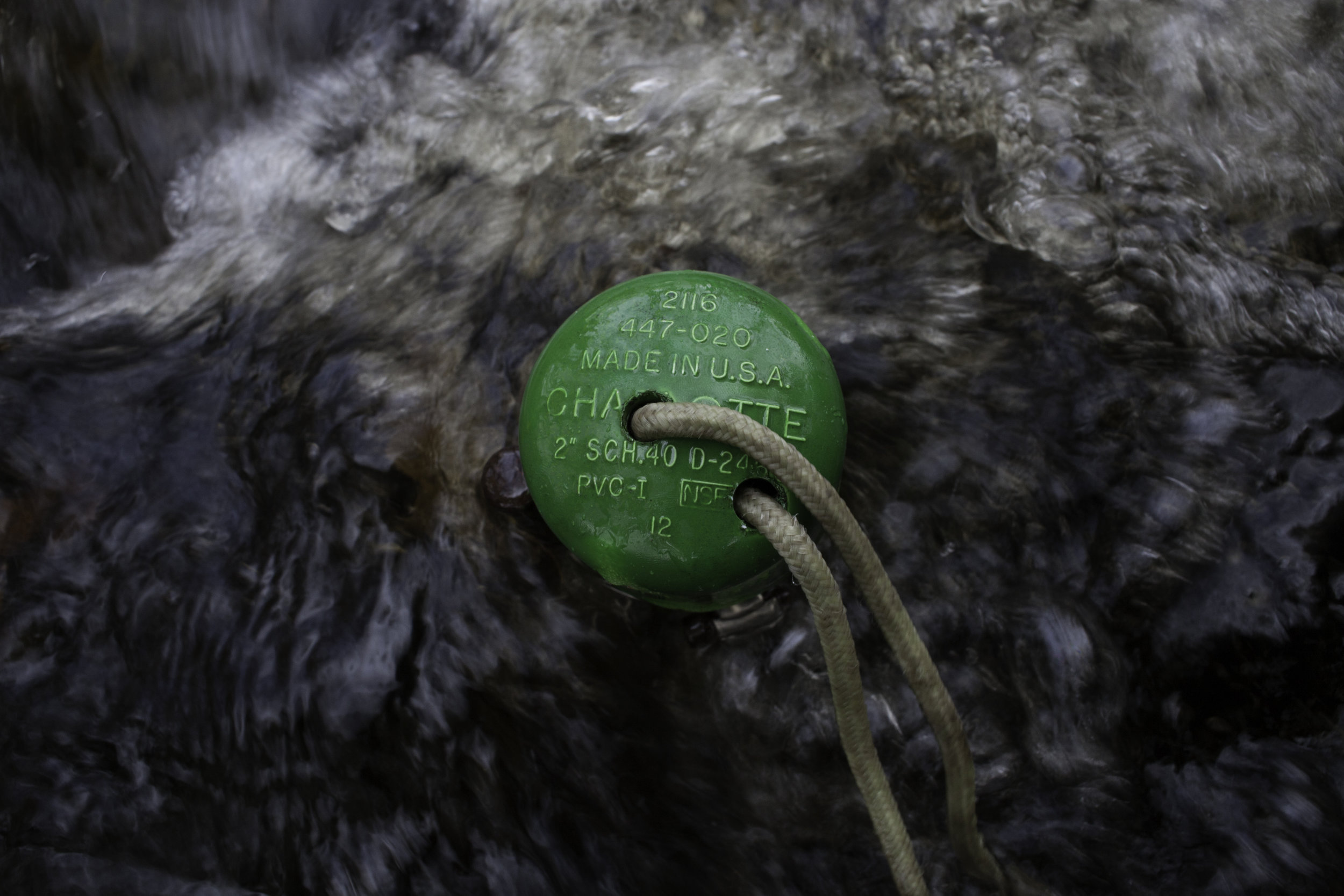The national conservation organization, Trout Unlimited, turned to our team at One Nature in 2015 for a comprehensive hydrological evaluation of a brook in Connecticut. They were concerned about threats to native fish populations, especially brook trout, and hired us to conduct a scientific assessment.
The brook is a secondary tributary to Long Island Sound and contains unique habitat for native brook trout population. Trout are considered an “umbrella” species — if trout health is suffering, it is likely that other species are also under threat. Trout Unlimited noticed unhealthy, stagnant water in the lower section of the brook. During the hot summer months, it is likely that water becomes too warm for brook trout in the stagnant lower section of the water body.
The upper half of the brook, however, is excellent brook trout water with water that typically moves in steady volume. A temperature survey revealed a consistently cool temperature, generally well below the 70-degree threshold that is so important to trout health. But this fresh, abundant, cool water disappears downstream. Further observation led to the conclusion that the most likely reason for the degraded section of brook is that a water utility company is drawing large quantities of water from the affected site.
Over a six-month period—April through October 2015—we monitored the brook using in-situ probes, photographic documentation, fieldwork, and desktop analysis. Six monitoring sites were set up along the brook to record atmospheric pressure and water volume, depth, and temperature. The result of this work provides significant insight into the dynamics of stream flow in the brook.
Many rivers and streams on the East Coast are ecologically altered by a centuries-old tradition of water harvesting to support local communities. However, such water harvesting does not necessitate the degradation of the overall ecological health of waterways. Our study outlined a series of next steps which should be taken to restore healthy, year-round flows to the lower section of the waterway.

